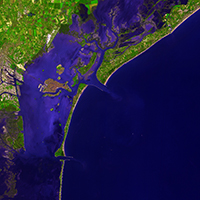Spatial diversity of planktonic protists in the Lagoon of Venice (LTER-Italy) based on 18S rDNA

Submitted: 11 March 2020
Accepted: 23 June 2020
Published: 29 June 2020
Accepted: 23 June 2020
Abstract Views: 2162
PDF: 648
HTML: 7
HTML: 7
Publisher's note
All claims expressed in this article are solely those of the authors and do not necessarily represent those of their affiliated organizations, or those of the publisher, the editors and the reviewers. Any product that may be evaluated in this article or claim that may be made by its manufacturer is not guaranteed or endorsed by the publisher.
All claims expressed in this article are solely those of the authors and do not necessarily represent those of their affiliated organizations, or those of the publisher, the editors and the reviewers. Any product that may be evaluated in this article or claim that may be made by its manufacturer is not guaranteed or endorsed by the publisher.


 https://doi.org/10.4081/aiol.2020.8961
https://doi.org/10.4081/aiol.2020.8961








